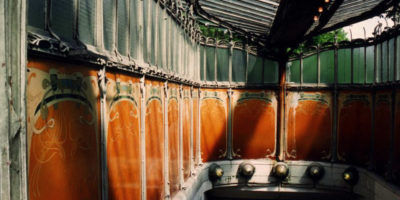Top 10 Reasons to Visit the Dali Museum of Paris in Montmartre
The Dali Museum in Montmartre is a relatively new and undeniably popular attraction nestled on a quite street in the 18th arrondissement of Paris.
One thing visitors to Paris love, is that they are able to visit so many museums that revolved around just a single artist. The Picasso Museum is situated in Le Marais, the Musée Marmottan Monet can be found in the 16th arrondissement… and in Montmartre we pay homage to Salvador Dali.

Dali Museum – by Dali Museum – Uploaded by them
If melting clocks aren’t enough, here are 10 more reasons to head through to this space.
Espace Dalí
11 Rue Poulbot, 75018 Paris, France
+33 1 42 64 40 10
Monday to Sunday: 10am – 6:30pm
Admission: €11.50 (free for children under 8)
1. View 300 Original Works at the Dali Museum of Paris in Montmartre
Because the artworks in this space were acquired through a private collection, there are over 300 original works by the artist to make your way through.
The pieces work toward piecing together the world inside Dali’s head; a Dali Universe, if you will. It is a reactively small museum that can definitely be digested fully within a single day, though you’ll likely be tempted to go back for more.

Dali Museum – by Dali Museum – Uploaded by them
2. Not Only Sculptures and Paintings at the Dali Museum of Paris in Montmartre
Contrary to popular belief, the Dali Museum isn’t limited to works of painting and sculpture alone. The space is also home to many process pieces and alternative works that weren’t as well known.
Think sketches, notebooks, etchings and even furniture. There are also multimedia aspects to the museum that use video and sound to tell stories of the man himself.

Dali Museum – by Dali Museum – Uploaded by them
3. It is One of the Least Crowded Museums in Paris
This wouldn’t usually be a selling point for a museum, but considering its size and the generally crowded nature of the rest of the museums in Paris, it is!
The Dali Museum is situated on a quiet street in the 18th arrondissement. Many visitors actually find this museum by mistake while taking aimless strolls through the neighborhood .
Less crowding means more time in the space and more time with each individual piece of art. Win win.
4. It Recently Underwent Renovations
Unbeknownst to me at my time of visit, this museum was actually completely closed during the beginning months of 2018 so that the entire space could be renovated.
Apparently it was in dire need of some restructuring, and those who have visited both before and after the changes conclude it to be a job well done.

Dali Museum – by Dali Museum – Uploaded by them
5. There are Gallery Works for Sale at the Dali Museum of Paris in Montmartre
Part of the Dali Museum is made up of a gallery/shop space where representations and curios of his work are available for purchase. If you have any Dali-crazy friends back home, a gift from this little shop would likely make their year.
6. It is the Only Permanent Exhibit in France
Did I mention this museum is officially the largest collection of Dali works in one space in all of France? It is. It is also the only permanent exhibit in France to feature only works of Salvador Dali — all others are exhibited alongside other artists from the same genre or era.
Surrealism is a world of its own. Viewing one or two pieces in a full scale art museum has its limitations; being able to view piece after piece after piece really pushed one to delve deep into the realm that Dali sought to create.

Dali Museum – by Dali Museum – Uploaded by them
7. Children Love the Dali Museum of Paris in Montmartre
They really do. And it’s easy to understand why! The works are animated on some level; melting clocks, elephants on stilts, giant snails — not far off from a child’s imagination.
The kids at the Dali Museum spend hours moving between the pieces. The layout of the museum involves a lot of floor based installations so they also enjoy getting right up close to each one.
Start thinking about how you’re going to explain some of the scenes depicted in the paintings when the time comes… get creative.
8. You’ll be Within Walking Distance of the Sacre Coeur in Montmartre
The beautiful Sacre Coeur church that crowns the hilltop is just a few minutes walk east from the Dali Museum.
You’ll know you’re going the right direction when the streets start to bustle and you’re suddenly caught behind slow moving individuals or free guided walking tours.

Sacre Coeur – by Ddxc – Wikimedia Commons
From the church you’ll enjoy a panoramic view of Paris with all the southern landmarks in clear view. If you want to get even higher, pay the small admission fee and make your way up to the Sacre Coeur dome right at the very top!
9. You’ll Learn About Levi and Dali
Benjamino Levi was an Italian art dealer and surrealist expert within the Parisian art scene. He and Dali had a longstanding relationship that began in the 1970s.
They were business partners, in a sense, though neither of them would probably have put it into so many words. Levi helped get Dali’s name out in the art world at the time — he also owned a vast personal collection of pieces.
It was Levi who eventually founded this very museum so that Dali’s works could live on in the city he loved most. While inside the Dali Museum in Montmartre you’ll received information about their union and be able to put a face to each of them.

Dali Museum – by Dali Museum – Uploaded by them
10. You can Explore Montmartre after the Dali Museum of Paris
A perk of going into the Dali Museum is that you’re in Montmartre when you come out. From this point you can either make you’re way further up the hill, or start heading back down.
Regardless of the direction, you’ll pass cafes, bistros, bookstores, vintage shops, galleries and ice cream parlors. There’s no place like Montmartre.

 English
English











